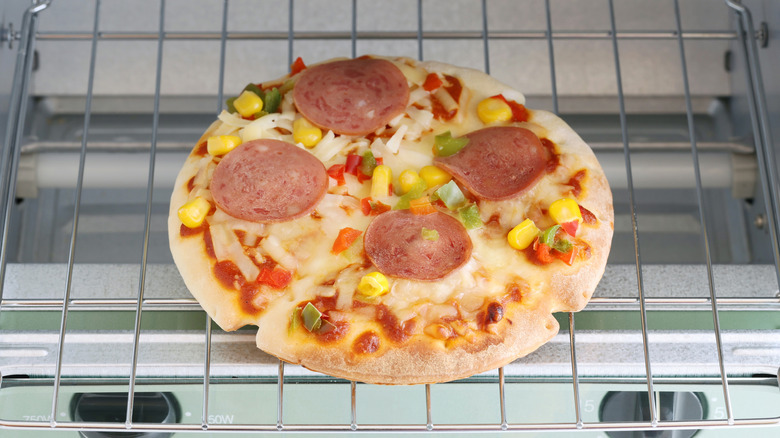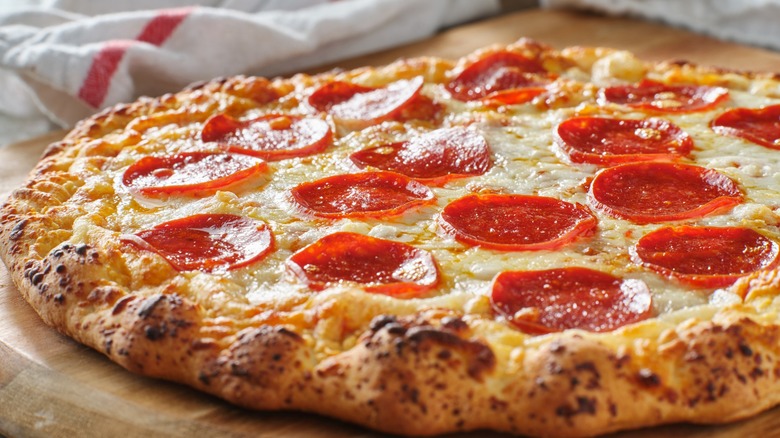Is It Safe To Eat Frozen Pizza That's Slightly Undercooked?
We may receive a commission on purchases made from links.
With all the frozen pizza brands available at the grocery store, you can get this convenient dinner option nearly any way you like it. From fluffy, chewy crusts with toppings piled high to a crispy plain cheese pie, people don't need to walk away with something they won't enjoy. However, if those pizzas aren't baked long enough, you are risking more than just a doughy meal.
Because frozen pizzas typically contain an ample amount of preservatives, one might think that a slightly undercooked pie is perfectly okay to consume. It is understandable, but this thought is also ill-advised. Like most other frozen foods, pizza should be cooked until it reaches 165 degrees Fahrenheit to ensure any problematic bacteria are eliminated before you dig in.
Frozen pizza is just as susceptible to contamination as any other meal from the freezer section of the supermarket. There have been frozen pizza recalls issued for Listeria contamination, for instance, while E. coli and Salmonella pathogens are also concerns. If you want to avoid gastrointestinal and other symptoms after enjoying your pie, checking the temperature with a food thermometer like the ThermoPro TP19H Digital Meat Thermometer is the only way to be realistically sure your pizza isn't in the danger zone where bacteria thrive. Admittedly, you don't often see folks sticking a thermometer in pizza to check its doneness. That is because there are plenty of telltale signs that will give you a visual indication it is done.
Ways to check your frozen pizza is done
Though the recent increase in food recalls could be a good thing, it is still in everybody's best interest to make sure everything they eat is properly cooked. Yes, some folks recommend thawing frozen pizza before baking it for a superior outcome, but they still cook it all the way through after defrosting. Yet studiously baking a frozen pie for the exact amount of time recommended on the box isn't a guarantee that it will emerge from the oven fully heated.
The primary indicator that your pizza is safe is seeing a golden brown crust on the edge. Still, just because the edges are done doesn't mean the crust on the bottom is. It is a good idea to lift it with a spatula and check the bottom; if you don't see that appetizing golden brown color, it needs a few more minutes.
Fully melted cheese is another sign your frozen pizza has reached a safe temperature. It should have slightly charred spots near the outer crust and bubble as it comes out of the oven. If you don't notice those characteristics, back in it goes. You can theoretically finish cooking it over the stove so you can watch it more closely ... if you have a pan large enough to fit a whole pizza. If your microwave can accommodate an entire frozen pizza, that is another option that will get it up to temp. However, for quality purposes, you should let Chef Mic stick to heating up other frozen meals.

